Ever wondered what it’s like to live in a home that redefines luxury and technology? Xanadu 2.0, the sprawling 66,000-square-foot mansion of Bill Gates, offers a glimpse into the future of home design. As the co-founder of Microsoft and a leading philanthropist, Gates’ estate in Medina, Washington is not just a residence—it’s a fusion of cutting-edge innovation, sustainability, and opulence. From its Pacific lodge-style architecture to its estate-wide smart home systems, this article will unveil the unique elements that make Xanadu 2.0 a marvel of modern design and technology.
Xanadu 2.0: Bill Gates’ Mansion in Medina
- 📍 Location: Medina, Washington, USA
- 💰 Estimated Price: Between $127 million and $170 million
- 🏗️ Year Built/Remodel: Built between 1988 and 1995, with ongoing updates
- 🏞️ Size of Land: 5.15 acres
- 🏠 Size of House: 66,000 square feet
- 🛏️ Rooms: 7 bedrooms, 24 bathrooms, 6 kitchens
Table of Contents
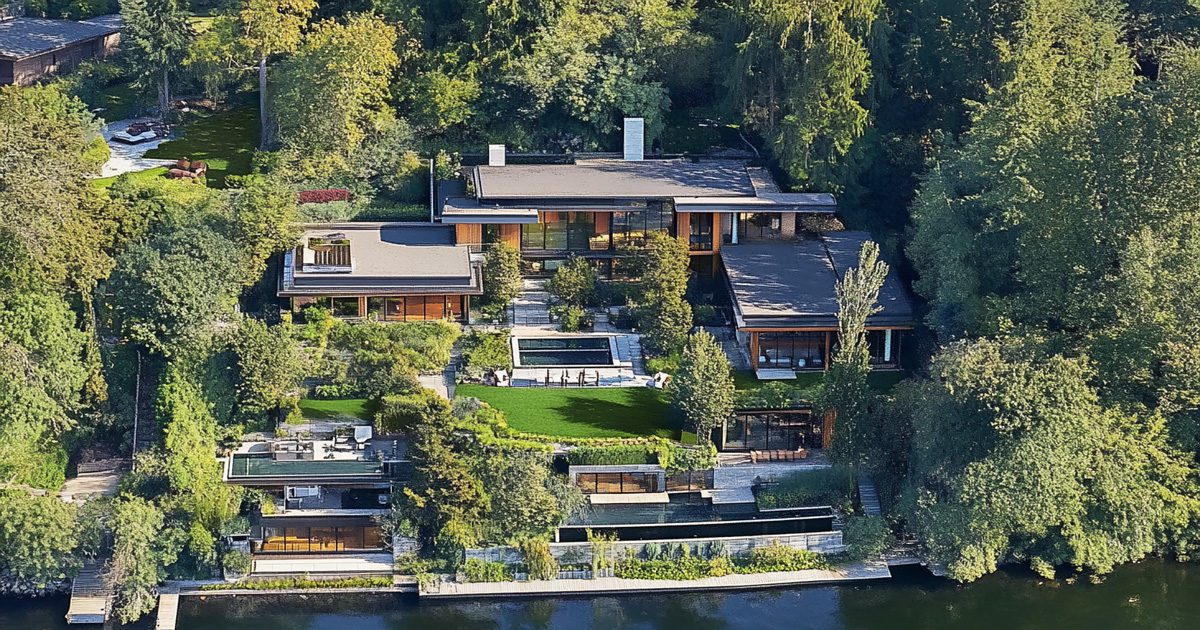
Architectural Design
Pacific lodge-style architecture characterizes Xanadu 2.0. This style, known for its use of natural materials, expansive spaces, and a harmonious relationship with the environment, couldn’t be more fitting for the Pacific Northwest. The architects Bohlin Cywinski Jackson and Cutler-Anderson Architects didn’t just build a mansion; they created a sanctuary that melds with its surroundings. Think large timber beams, stone elements, and floor-to-ceiling glass walls that invite the lush, green landscape inside.
This style is rooted in the ethos of the region: respecting nature while celebrating modernity. It’s a nod to traditional log cabins, but with a high-tech twist. The use of wood, stone, and glass doesn’t just make the structure beautiful; it also speaks to the sustainability that is so integral to the design. In a world where concrete and steel dominate, Xanadu 2.0’s commitment to natural materials is refreshing and, dare I say, inspiring.

Exterior Features
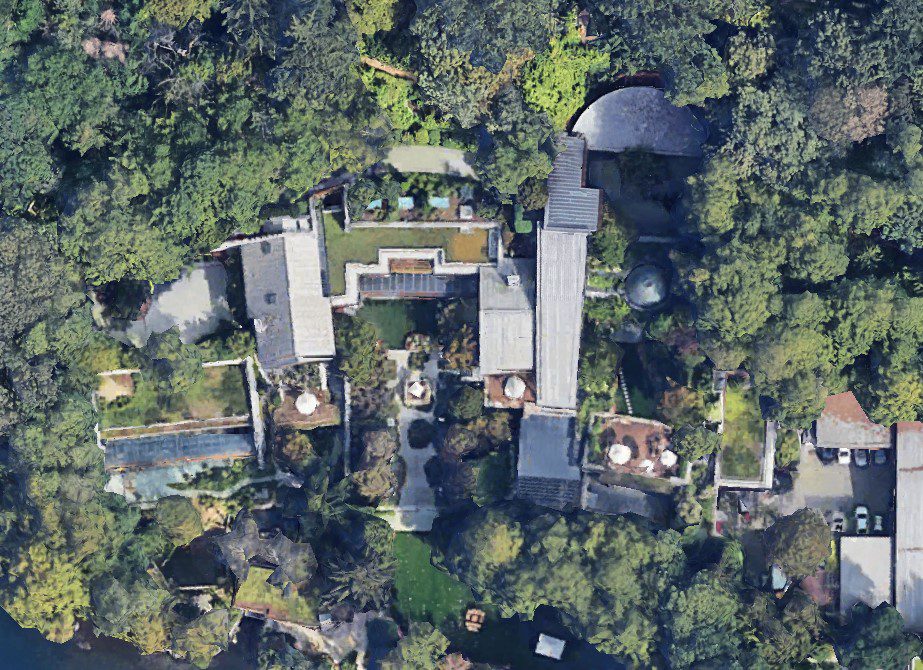
The landscaping at Xanadu 2.0 is nothing short of breathtaking. It’s not just about having a beautiful garden; it’s about integrating the home with its natural surroundings. The property features a combination of meticulously maintained lawns, native plants, and winding pathways that make the mansion feel like it’s part of the landscape rather than imposed upon it. Gates’ love for nature is evident here. He even has a 40-year-old maple tree on the property that’s monitored by a computer system to ensure it receives just the right amount of water. This is technology serving nature, not dominating it.

One of the things that truly sets Xanadu 2.0 apart is its commitment to sustainability. This isn’t just a showcase of wealth; it’s a statement about responsible living. The home features a range of energy-efficient systems, including geothermal heating and cooling, and a network of solar panels discreetly placed throughout the property. These systems help reduce the mansion’s carbon footprint, proving that luxury and sustainability can, and should, coexist.
Interior Design of Xanadu 2.0
Walking into Xanadu 2.0 is akin to stepping into the future, albeit one wrapped in the warm embrace of natural materials and meticulous design. The entrance sets the tone for the rest of the mansion, showcasing a blend of rustic elegance and technological sophistication. As you enter, you’re greeted by an expansive foyer adorned with natural stone walls and rich wooden beams, a nod to the Pacific lodge-style architecture that defines the estate. The floor-to-ceiling glass walls invite a flood of natural light, making the space feel open and connected to the surrounding landscape.
Living Areas
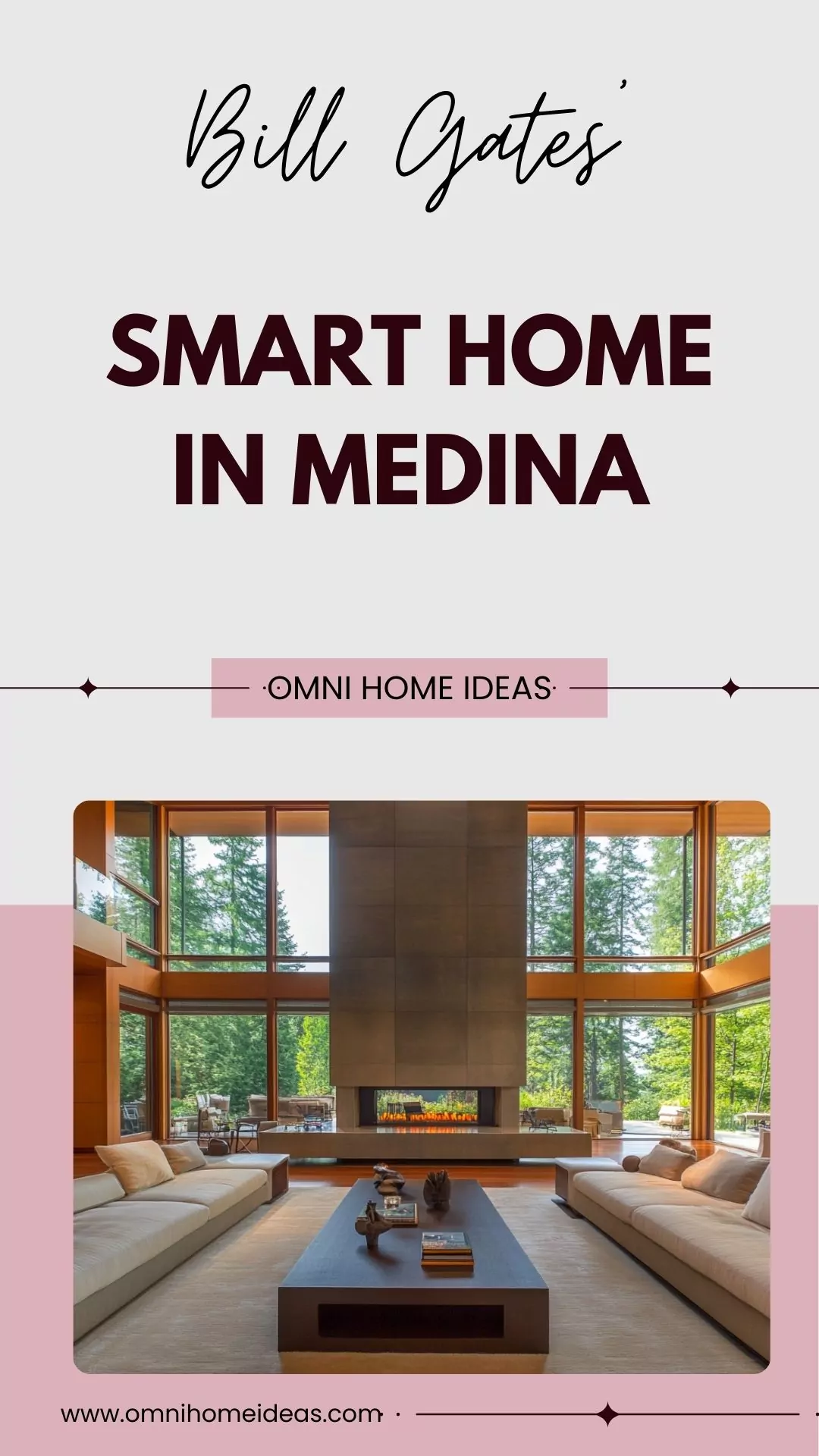
The living areas in Xanadu 2.0 are designed with an open floor plan that encourages a fluid transition from one space to another. This design choice not only enhances the sense of spaciousness but also fosters a social atmosphere where guests and family members can move freely. The layout prioritizes comfort and functionality, with large, plush seating areas that invite you to relax and unwind.
The use of large glass panels throughout the living areas creates a seamless connection between the indoors and the surrounding natural landscape. It’s a design that speaks to Gates’ appreciation for both innovation and nature, allowing residents and visitors alike to feel a constant connection to the outdoors.
Private Library
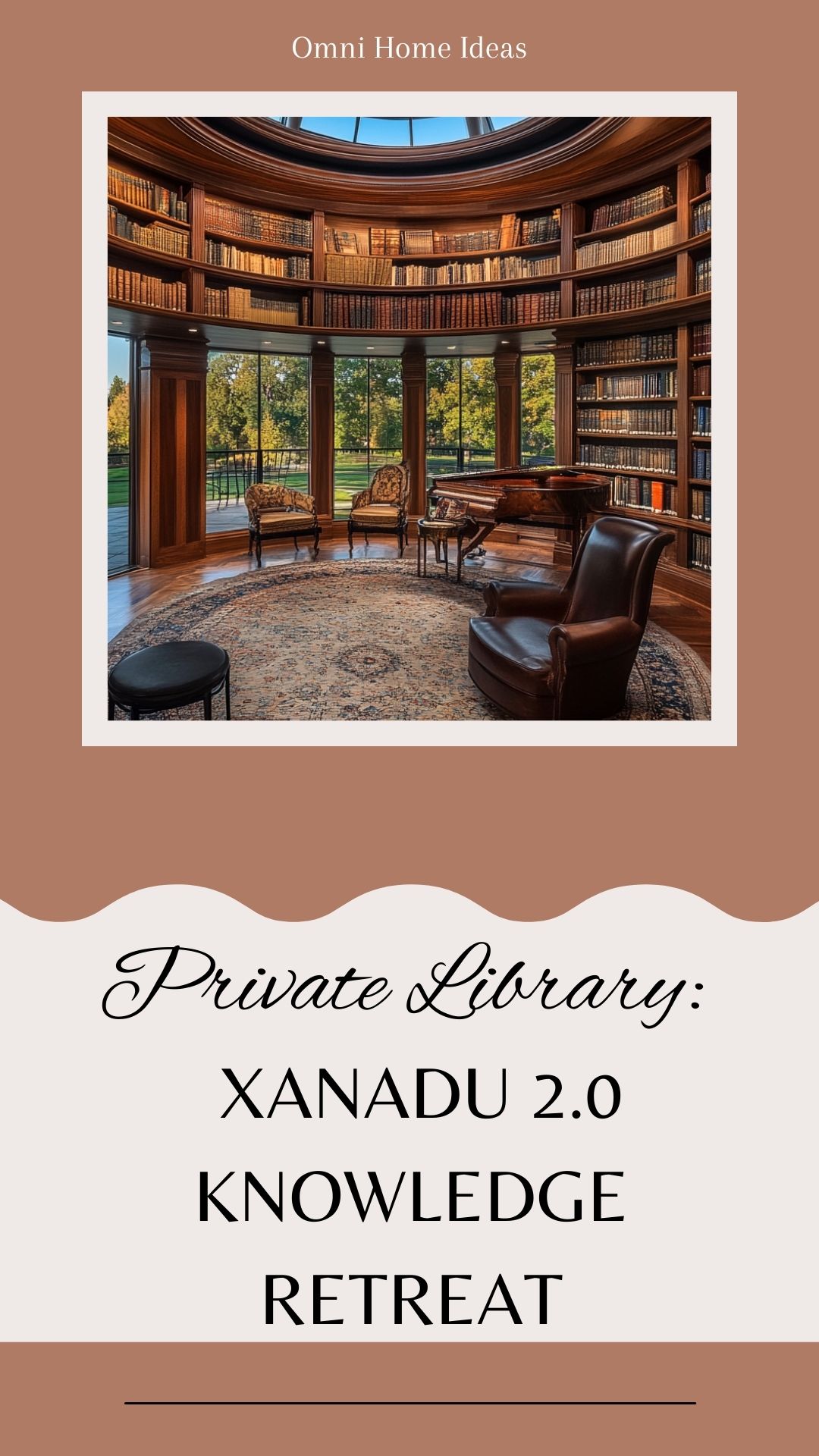
One of the most stunning features of Xanadu 2.0 is its private library, which boasts a dome-shaped ceiling and a central oculus. This architectural element not only enhances the grandeur of the room but also allows natural light to flood the space, creating a serene environment for reading and contemplation. The oculus acts as a symbolic “eye,” connecting the intellectual pursuits inside with the sky above. It’s a design that invites introspection and discovery—a fitting sanctuary for one of the world’s most voracious readers.
The library also hides a few surprises. Two hidden bookcases open to reveal a discreet bar, blending the classic allure of a secret door with the modern luxury of a private retreat. This element of surprise adds a playful touch to the otherwise scholarly atmosphere, proving that even in the most serious of spaces, there’s room for a bit of fun.
Special Collections: Leonardo da Vinci’s Codex Leicester
Among the library’s treasured collections is Leonardo da Vinci’s Codex Leicester, a 16th-century manuscript that Gates purchased in 1994 for $30.8 million. This rare piece of history is more than just a valuable artifact; it symbolizes Gates’ love for knowledge and innovation. The Codex, filled with da Vinci’s scientific musings and sketches, finds a fitting home in a space dedicated to the pursuit of learning.
The Great Gatsby Quote on the Ceiling
Adding to the literary ambiance, a quote from F. Scott Fitzgerald’s The Great Gatsby is inscribed on the library’s ceiling. It reads: “He had come a long way to this blue lawn, and his dream must have seemed so close that he could hardly fail to grasp it.” This poignant reflection on aspiration and achievement serves as a subtle reminder of Gates’ own journey and the vision that brought him here.
Kitchens and Dining Areas

Yes, you read that right—Xanadu 2.0 has six kitchens. Each is designed for a specific purpose, ranging from intimate family meals to grand banquets. There’s a main kitchen equipped with state-of-the-art appliances for everyday use, a professional-grade kitchen for events, and smaller, more private kitchens located near the bedrooms for convenience. The sheer number of kitchens might seem excessive, but in a house this size, it’s about practicality and ensuring that every space serves its function efficiently.
The main dining room is a masterpiece in itself. With seating for up to 24 guests, it’s designed to host large gatherings without losing the sense of intimacy. The room features expansive windows that offer stunning views of Lake Washington, creating a dining experience that’s as much about the surroundings as it is about the food. The design combines rich woods and warm lighting, making it both luxurious and inviting.
For more private meals, there are several smaller dining areas scattered throughout the mansion. These spaces are cozy and secluded, perfect for enjoying a quiet dinner with family or a close friend. Each area is thoughtfully designed to offer a unique ambiance, whether it’s a sunlit breakfast nook or a candle-lit corner overlooking the garden.
Bedrooms and Bathrooms
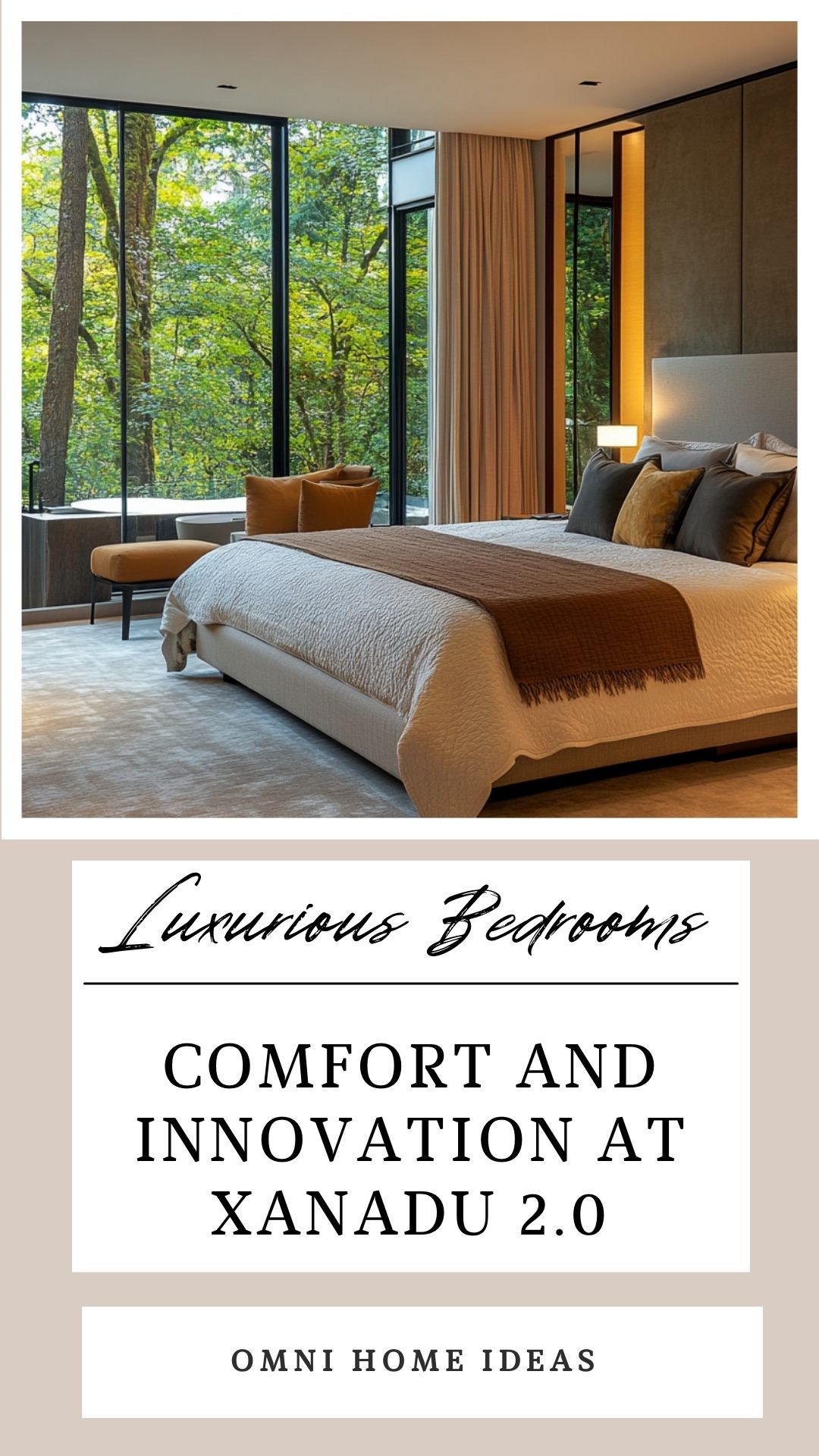
The mansion’s seven bedrooms are each designed as a personal retreat, offering a unique blend of comfort and luxury. The master suite is particularly impressive, featuring a private sitting area, a fireplace, and an expansive balcony with panoramic views. The other bedrooms are no less luxurious, each boasting its own design theme and state-of-the-art amenities.
While the number of bedrooms is modest, Xanadu 2.0 makes up for it with 24 bathrooms—ensuring that no one ever has to wait. Each bathroom is uniquely designed, featuring high-end fixtures, heated floors, and even custom lighting systems. There are bathrooms with sunken tubs overlooking the lake, steam showers that double as saunas, and even one with a waterfall feature. It’s luxury at its finest, but also a testament to how even the smallest details have been considered.
Privacy is a recurring theme throughout the mansion. Each bedroom and bathroom is designed to provide a sense of seclusion and comfort, with soundproof walls and private balconies that ensure a peaceful retreat from the rest of the house. It’s a design that respects the need for both space and solitude in a home that’s otherwise dedicated to grand, social experiences.
Recreation and Wellness Facilities

The 25,000-square-foot gym at Xanadu 2.0 is not just a place to work out; it’s a state-of-the-art wellness center. Equipped with everything from high-tech cardio machines to a full-sized basketball court, the gym is designed for serious fitness enthusiasts. The space is open and airy, with floor-to-ceiling windows that provide views of the surrounding landscape, making every workout feel like an escape into nature.
For those who prefer relaxation over exercise, the mansion also features a comprehensive spa area. With a steam room, sauna, and private massage rooms, it’s a sanctuary dedicated to wellness and self-care. The spa facilities are designed with natural materials and calming colors, creating a serene atmosphere that invites you to unwind and recharge.
Of course, no mansion is complete without a bit of fun. Xanadu 2.0 features an advanced movie theater with plush seating, a high-definition screen, and the latest sound technology. There’s also a gaming area equipped with everything from classic arcade games to the latest virtual reality setups. It’s a space designed for entertainment and enjoyment, proving that even in a house as sophisticated as this, there’s always room for play.
Technological Innovations at Xanadu 2.0
Xanadu 2.0 is more than just a luxurious mansion—it’s a technological marvel. At the heart of the home’s advanced systems is an estate-wide server system that controls nearly every aspect of the environment. This isn’t just a matter of convenience; it’s about creating a space that adapts to the needs and preferences of its residents.
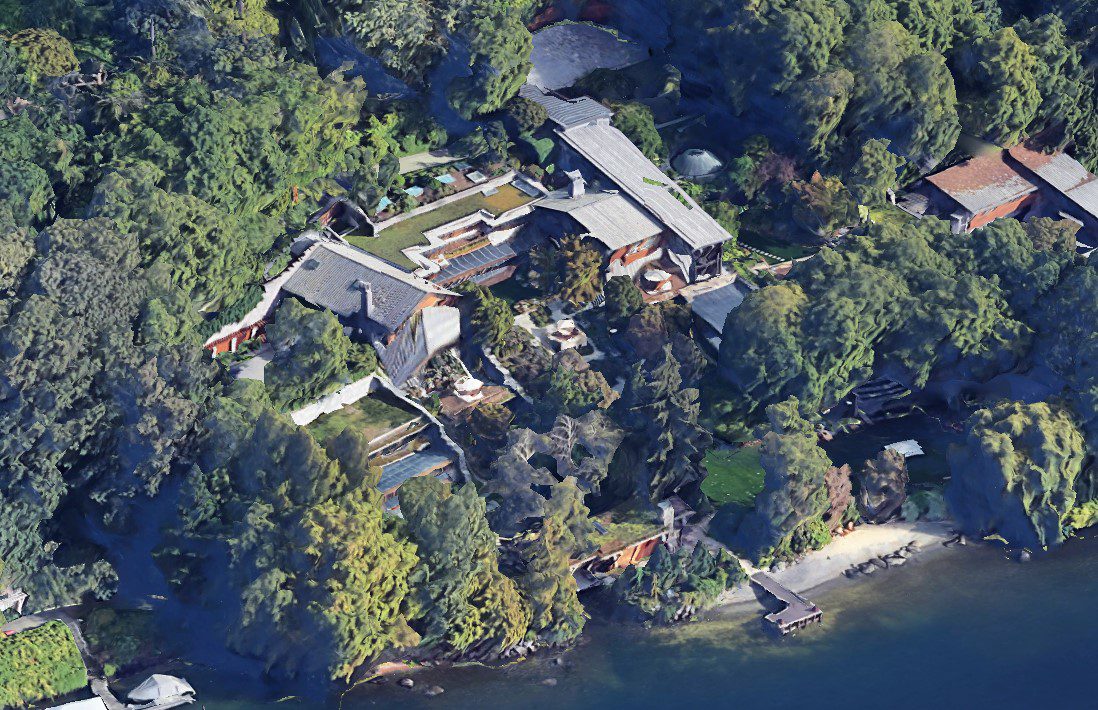
The server system manages everything from lighting and climate control to security and entertainment. Imagine walking into a room and having the lights adjust to your preferred brightness, the temperature set to your ideal comfort level, and your favorite playlist starting in the background—all without lifting a finger. It’s not just smart; it’s intuitive, and that’s where the brilliance lies. The technology is designed to disappear into the background, enhancing the living experience without drawing attention to itself.
Everything in Xanadu 2.0 can be controlled through personal devices such as smartphones or tablets. Whether you’re adjusting the lighting in the living room, setting the temperature in the bedroom, or checking the security cameras, it’s all just a few taps away. The system also allows for voice control, adding yet another layer of convenience. It’s the ultimate in home automation, reflecting Gates’ vision of technology that not only serves but anticipates your needs.
Is Xanadu 2.0 Too Much Tech for Comfort?
While Xanadu 2.0 is undoubtedly a marvel of technological innovation, it has faced criticism for its overwhelming use of smart features. The house tracks residents’ movements using a pin device that controls their preferences, setting off alarms if anyone without a pin is detected. This level of surveillance led Melinda Gates to describe the home as a “bachelor’s dream but a bride’s nightmare,” and even caused her to temporarily halt construction during its development. Despite this, the estate remains a symbol of what’s possible when technology meets luxury.
Unique Features
Imported Sand from St. Lucia for the Private Beach
One of the most striking features of Xanadu 2.0 is its private beach, complete with imported sand from St. Lucia. It’s a detail that seems almost extravagant, but it adds a unique touch to the lakeside experience. This imported sand is not just about luxury; it’s about creating a perfect, personal oasis right at the water’s edge. It’s the kind of feature that makes you stop and think, “Who else would even think of this?”
Trampoline Room with a High Ceiling
The mansion’s trampoline room is another standout feature. With a 20-foot ceiling and professional-grade equipment, it’s a space designed for pure enjoyment. I remember being shown this room and thinking, “Only Bill Gates would have a trampoline room in his house.” It’s these unexpected, playful touches that make Xanadu 2.0 more than just a grand estate—it’s a home filled with surprises.
Symbolism of Xanadu 2.0

The name “Xanadu 2.0” is a direct reference to Charles Foster Kane’s grand estate in Citizen Kane, itself inspired by Samuel Taylor Coleridge’s poem Kubla Khan. In the film, Xanadu represents wealth, power, and the ultimate futility of materialism. It’s a palace built to house dreams that, in the end, remain unfulfilled. While Bill Gates’ Xanadu 2.0 is a real, tangible place, the comparison is apt. It too is a monument to achievement and ambition, though with a decidedly more positive legacy.
Where Kane’s Xanadu was a lonely, isolated fortress, Gates’ estate is a home, albeit a highly sophisticated one, designed to be lived in and enjoyed. It’s not just a symbol of wealth but of innovation and the potential for technology to enhance our lives. In this way, Xanadu 2.0 turns the metaphor on its head, representing not the futility of wealth but the possibilities that it can create when paired with vision and purpose.
FAQ
Where does Bill Gates live now?
Bill Gates primarily resides at Xanadu 2.0 in Medina, Washington. This 66,000-square-foot mansion overlooking Lake Washington serves as his main residence and is known for its innovative design and cutting-edge technology. In addition to Xanadu 2.0, Gates also owns several other properties, including homes in Del Mar, California, and Wellington, Florida.
What is the address of the Bill Gates’ Xanadu 2.0 property?
The address of Bill Gates’ mansion, Xanadu 2.0, is not publicly disclosed for privacy and security reasons. However, it is located in Medina, Washington, on the shores of Lake Washington. It is a highly secure and private residence, integrated with advanced surveillance and security systems.
How much is the Xanadu 2.0 house worth?
Xanadu 2.0 is valued between $127 million and $170 million, depending on the source. The property has seen significant appreciation since Bill Gates purchased the lot for $2 million in 1988. This valuation includes the mansion’s extensive high-tech features, sustainable design, and prime lakeside location.
How long did it take to build Xanadu 2.0?
It took seven years to construct Xanadu 2.0, from 1988 to 1995. The mansion’s construction required a significant investment of $63 million, reflecting the ambitious scope and integration of technology that characterizes the property. The estate was designed to be both luxurious and eco-friendly, incorporating sustainable materials and energy-efficient systems.
What are some unique features of Xanadu 2.0?
Xanadu 2.0 boasts several unique features, including a 60-foot swimming pool with an underwater music system, a trampoline room with a 20-foot ceiling, and a private library housing Leonardo da Vinci’s Codex Leicester. The estate also has an advanced home automation system, digital art displays that change at the touch of a button, and a private beach with sand imported annually from St. Lucia. It’s a blend of luxury and technology that reflects Gates’ vision of the future of residential design.
Conclusion
Xanadu 2.0 is not just a mansion; it’s a masterpiece of modern architecture, a marvel of technological innovation, and a symbol of cultural fascination. Its Pacific lodge-style design merges seamlessly with cutting-edge features like an estate-wide server system, digital art displays, and advanced security measures. The mansion’s luxurious amenities, from its private beach with imported sand to its trampoline room, make it a place of endless surprises and comfort.
But beyond its physical attributes, Xanadu 2.0 has become a cultural icon. It represents the convergence of wealth, technology, and vision, symbolizing what’s possible when these forces come together. It’s a home that invites us to think about the future of residential design, the role of technology in our lives, and the ever-blurring line between luxury and necessity.

